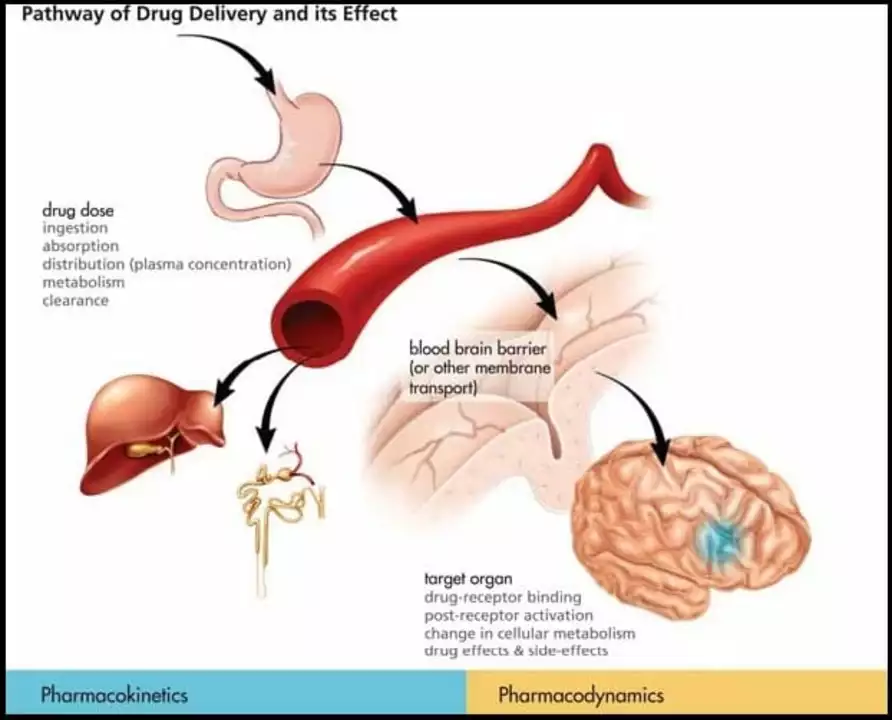Pharmacokinetics: How Drugs Move and What That Means for You
Pharmacokinetics explains how a drug gets into your body, where it goes, how it's changed and how it leaves. Those four steps—absorption, distribution, metabolism and excretion—shape how a medicine works, when it starts, and how long effects last. Knowing this helps you take meds safely, avoid interactions and understand side effects.
Absorption is about getting from dose to blood. Pills, injections, creams and inhalers all absorb differently. A swallowed drug like acetaminophen reaches blood faster on an empty stomach, but a fatty meal can slow or speed absorption depending on the drug. Topical creams like Betnovate mostly act locally; much less enters circulation, which matters for steroid side effects.
Distribution is where the drug goes next. Some drugs stay in blood, others sink into fat or bind to proteins. Lipophilic drugs—like many antidepressants—can build up in fatty tissue and have long effects. Water-soluble drugs, such as many antibiotics, stay more in the bloodstream and are cleared quicker. That's why dose and body size can change how a medicine works.
Metabolism is the body's chemical editing. The liver uses enzymes (think CYP family) to change drugs into forms the body can handle. Some drugs need activation—prodrugs become active only after metabolism. Others get broken down quickly. Genetic differences or other meds that block or boost liver enzymes can make a drug too weak or dangerously strong. For example, mixing certain statins with enzyme inhibitors raises risk of muscle problems.
Excretion is the final clean-up, mostly by kidneys, sometimes by bile. Impaired kidney function means drugs like gabapentin or many blood pressure meds stick around longer, so doctors lower doses. That’s why kidney and liver tests matter when prescribing long-term meds like isosorbide mononitrate or benazepril.
Why pharmacokinetics matters for everyday decisions
Timing, food, and other drugs change outcomes. Taking a pill at night vs morning, or with food, can change effectiveness. Some meds require tight timing—like antibiotics or birth control (Yasmin)—to keep levels steady. Missing doses or doubling up can cause side effects or loss of effect. Online pharmacies and buying meds without guidance raises the risk of wrong dosing or dangerous interactions.
Practical tips you can use
Always follow dosing instructions and ask if food affects absorption. Tell your doctor about all medicines, supplements and over-the-counter drugs—grapefruit and St. John’s wort are common culprits that alter metabolism. If you have kidney or liver issues, ask whether your dose needs adjusting. When switching brands or buying online, prefer pharmacies with a pharmacist contact to confirm dosing and authenticity.
Understanding pharmacokinetics gives you control: it explains why a drug starts fast or slow, why side effects appear, and why doctors adjust doses. Use that knowledge to ask better questions and keep your treatments safer and more effective.
For reliable drug-specific info, check trusted guides on this site — acetaminophen dosing, Flexeril side effects, Lamisil for fungal infections, ketorolac updates, and atorvastatin alternatives. Each article explains pharmacokinetic factors that matter. Start with the basics.

